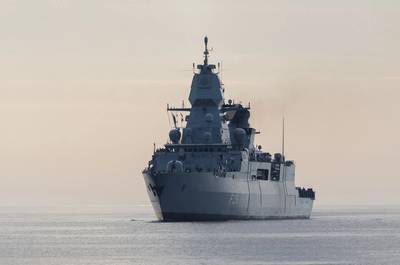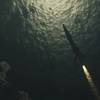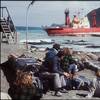Baltic Sea Drills to Focus for First Time on Repelling Russian Attack
Major naval drills about to start in the Baltic Sea involving some 30 ships and more than 3,000 Western service members will for the first time practice how to respond to a Russian assault in the region, Germany's navy chief said on Friday.
"We are sending a clear message of vigilance to Russia: Not on our watch," Vice-Admiral Jan Christian Kaack told reporters in Berlin. "Credible deterrence must include the ability to attack."
The two-week Northern Coasts exercise, set to start Sep 9, will see troops from all NATO countries on the Baltic Sea, plus soon-to-be member Sweden and non-Baltic allies the U.S., Canada, the Netherlands, Belgium and France, train side by side. They will practise amphibious operations and strikes from sea to land.
The U.S. navy will send the Mesa Verde into the drills, Kaack said, a ship of more than 200 metres (656 ft) length, designed to transport and land some 800 marines in an amphibious assault.
Securing the sea routes through the Baltic Sea is another focus of the exercise that will take place off the coasts of Latvia and Estonia
"Finland and the Baltic states depend to almost 100% on the maritime supply routes through the Baltic Sea," Kaack noted.
"Should the Suwalki Gap be blocked - and this can be done easily as there are only two roads and one railroad line - then we are left with the sea routes only, and that's where we will then have to make our way through."
The Suwalki Gap, a narrow land corridor of some 65 kilometres (40 miles), is the only connection linking the Baltic states to Poland and NATO's main territory in Europe.
It will be the first exercise of this size that the German navy, the biggest navy on the Baltic Sea according to Kaack, will command from its new maritime headquarters in Rostock which just reached operational readiness.
Germany aims to provide the facility to NATO as a regional maritime headquarters, capable of leading the alliance's operations in the Baltic Sea in case of a conflict.
"Our notification is on the way to SACEUR," Kaack said, referring to NATO's supreme allied commander, adding he expected a positive response by the alliance soon, thus beating Germany's competitor Poland to the task.
Finland joined NATO this year, and Sweden's application to join is expected to be approved soon, both moves coming in response to Russia's invasion of Ukraine. This has radically altered the strategic posture along the Baltic Sea, where much of the coast had belonged to neutral states since Napoleonic times; apart from Russia's own small stretches of coast, the entire seashore will soon belong to NATO members.
(Reuters - Reporting by Sabine Siebold; Editing by Peter Graff)













